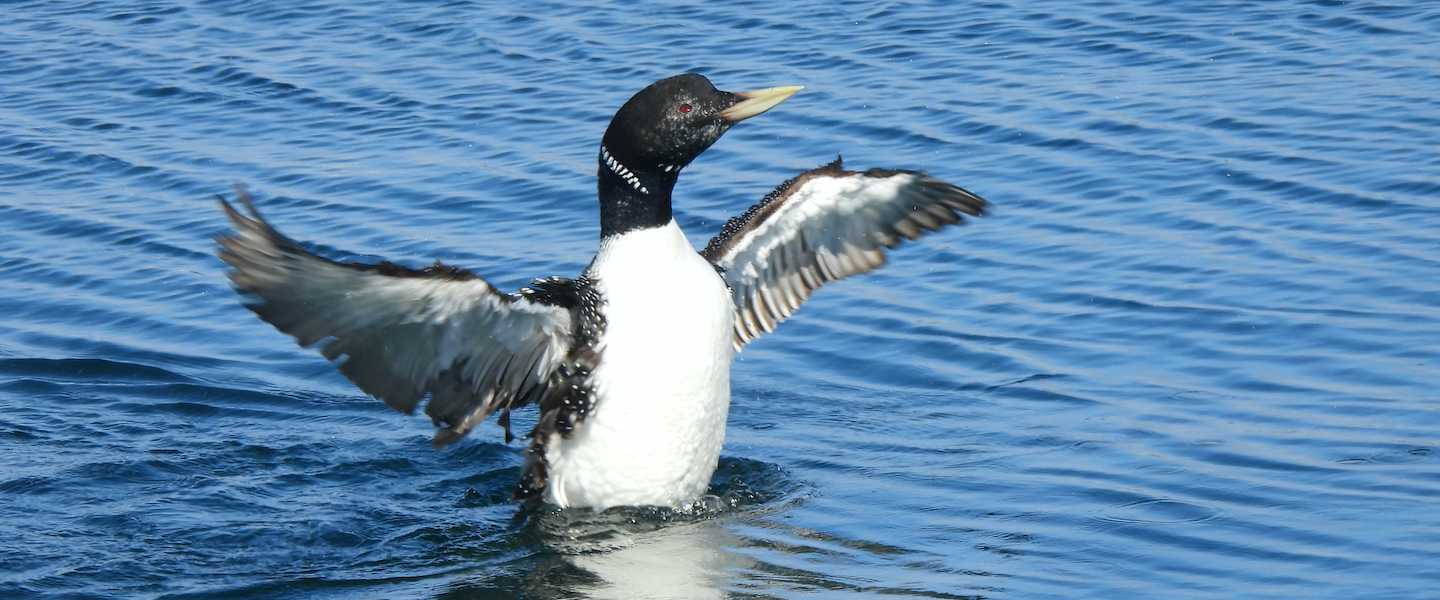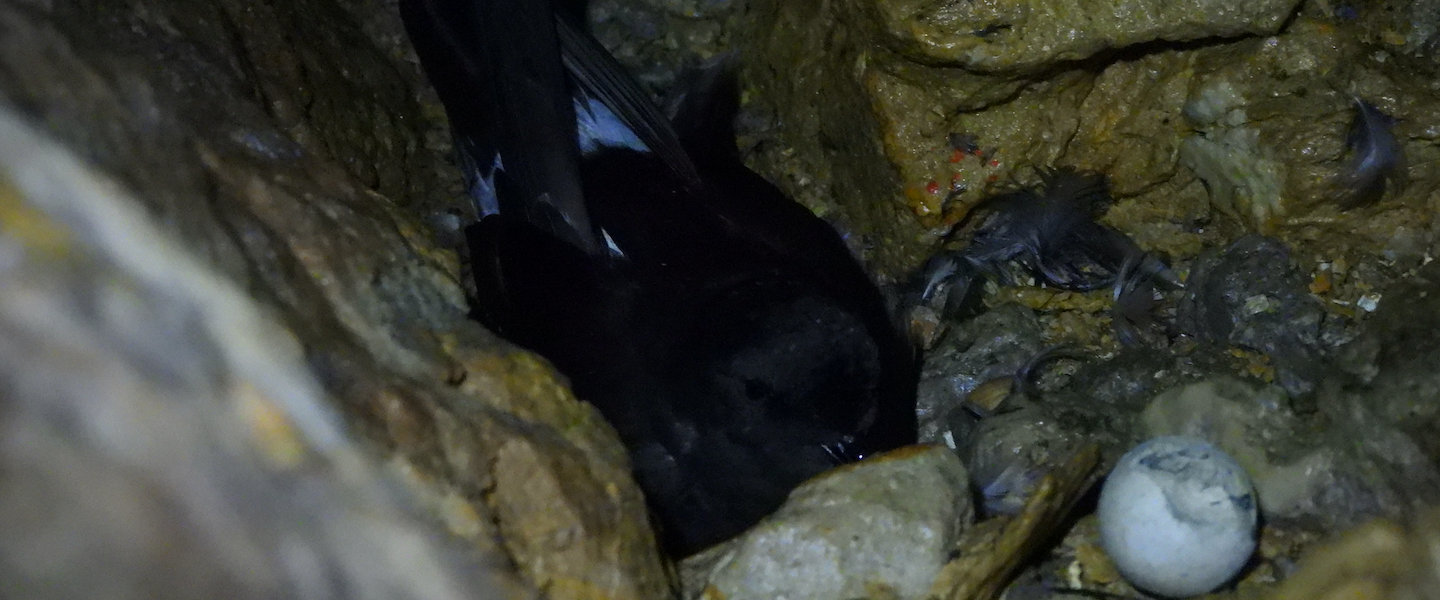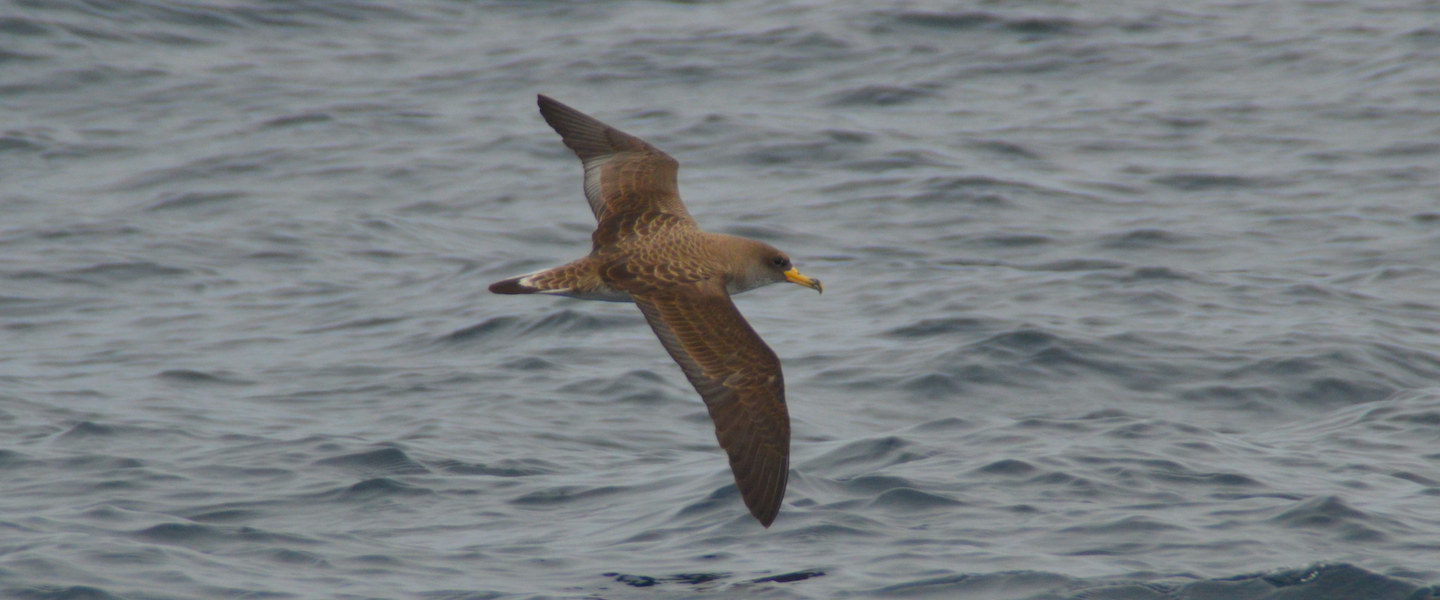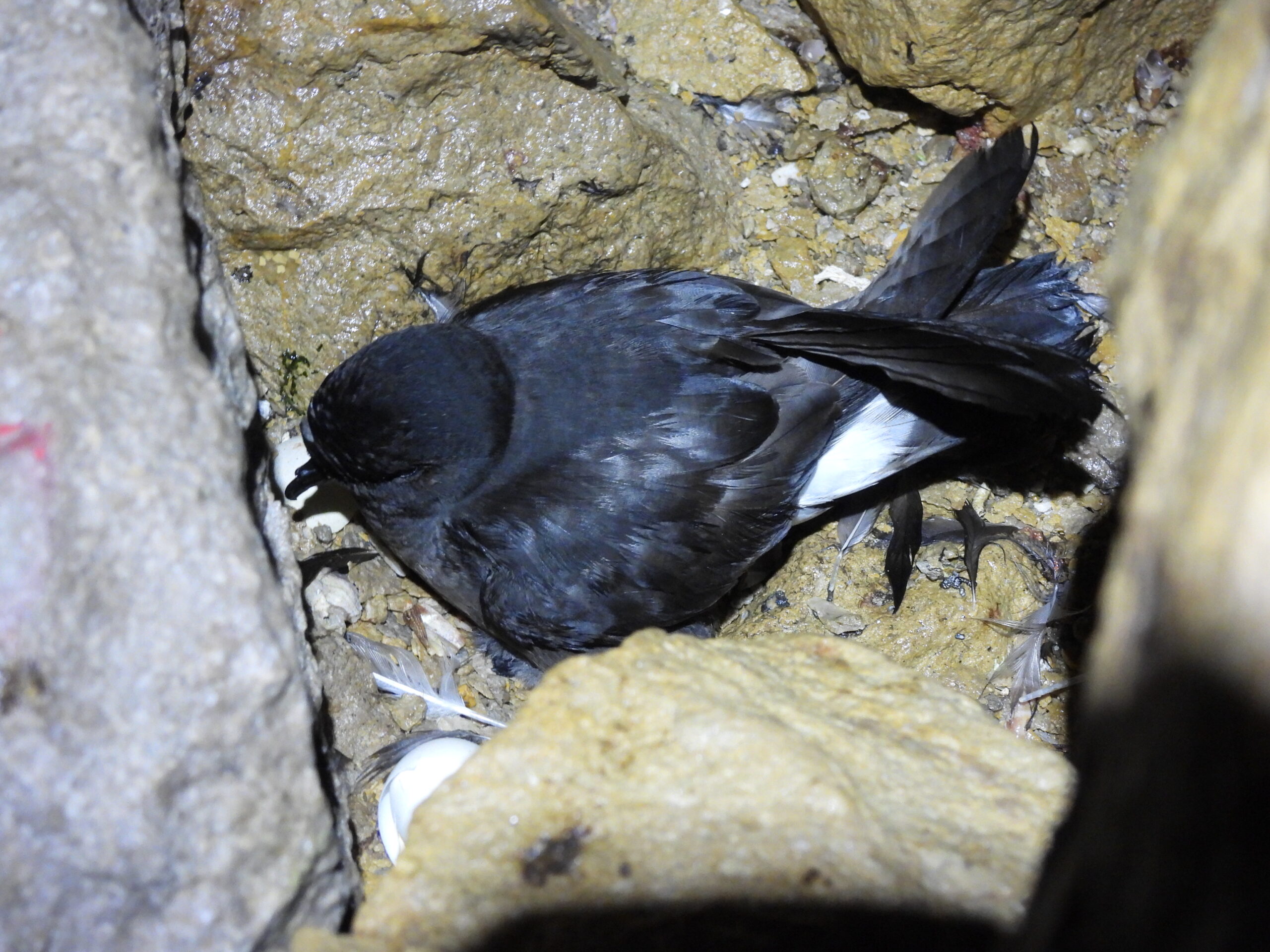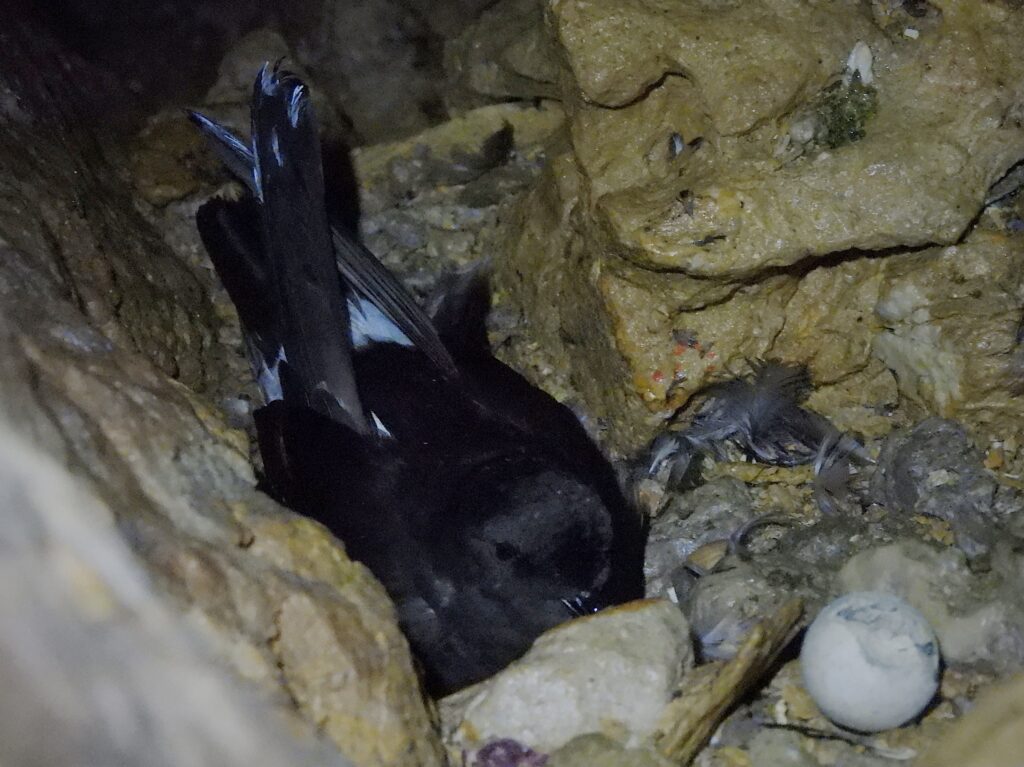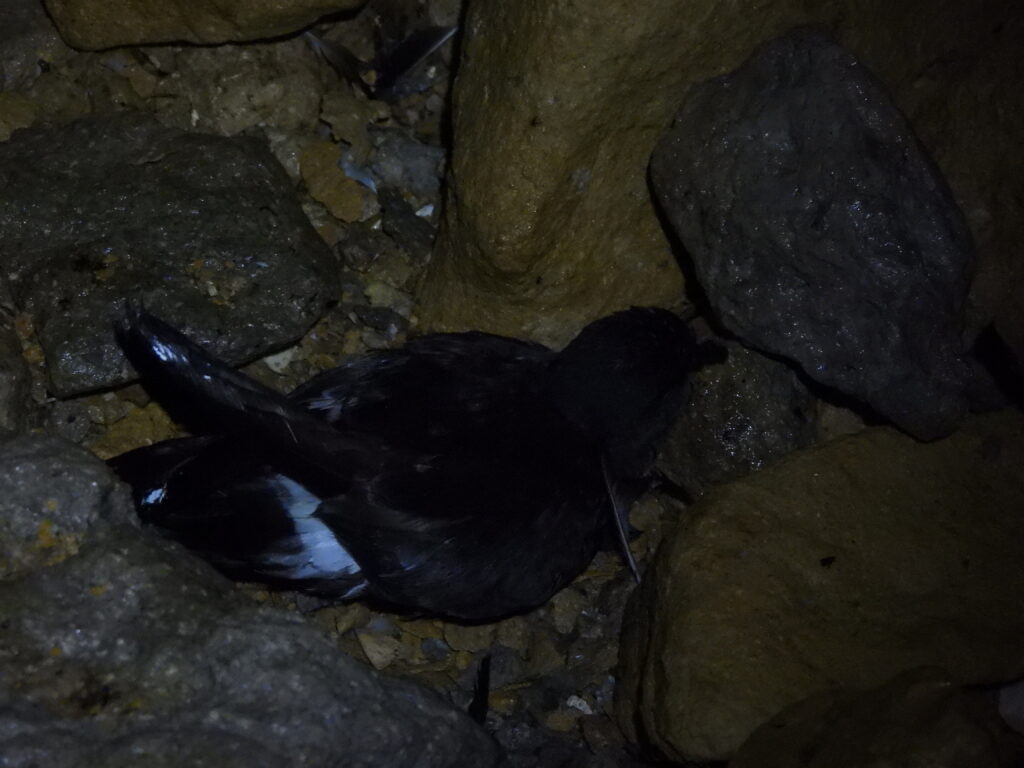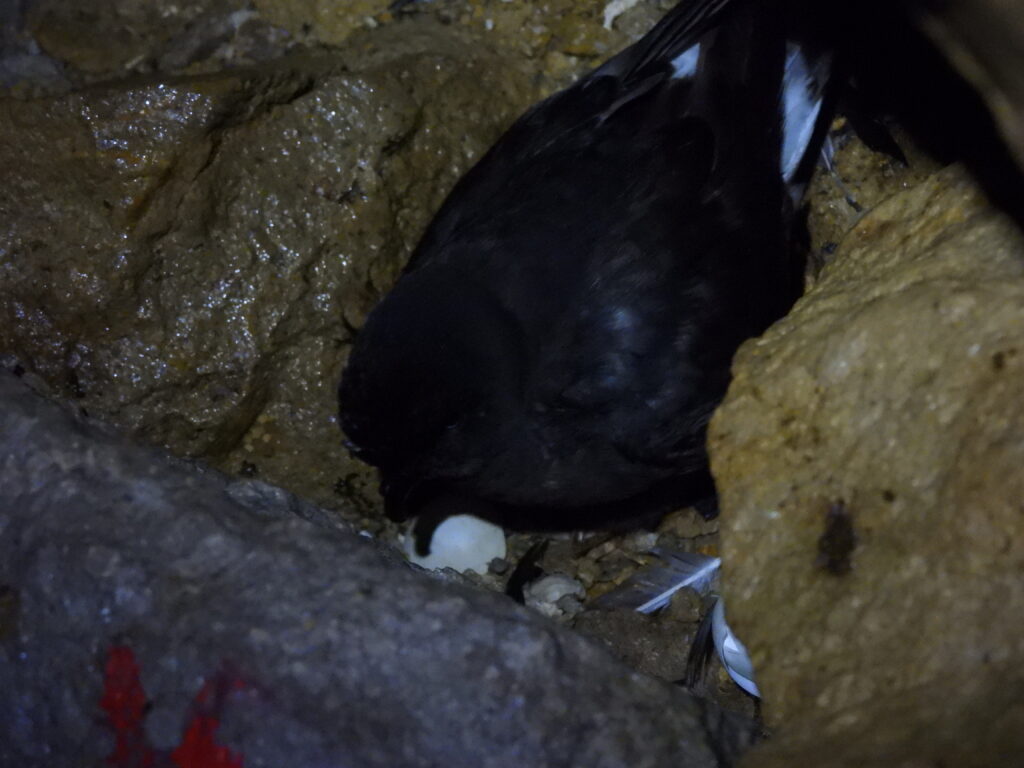The northern storm petrels (family Hydrobatidae) are a family of birds belonging to the order Procellariformes, often regarded as tubenoses. These small dark birds are strictly pelagic and only visit inland areas mostly at night for reproduction, as they breed in colonies mostly in caves and crevices of small offshore islands, with the exception of some species nesting in inland desert areas. They generally feed on floating organisms in the pelagic zone.
The family comprises 18 species in 1 genus, Hydrobates. However, the taxonomy of the members of this family and its relation with the sister group, the southern storm petrels (family Oceanitidae), is a topic of controversy yet to be studied in depth. Most species breed in offshore islets of the northern hemisphere with three species extending south to the Galapagos Islands and Atacama desert in north Chile. Breeding sites are poorly known and generally particularly sensitive to disturbance by introduced predators, driving several species threatened including one thought to be extinct.
European storm petrel
Hydrobates pelagicus
Smallest seabird in the Western Palearctic and the only storm petrel breeding in the region. The ‘Atlantic‘ pelagicus form breeds from Iceland and Norway south to the Canary Islands and forages to southern Africa, whereas the ‘Mediterranean‘ melitensis form seems to range near breeding areas. The latest form has several colonies in Alicante.

